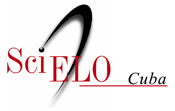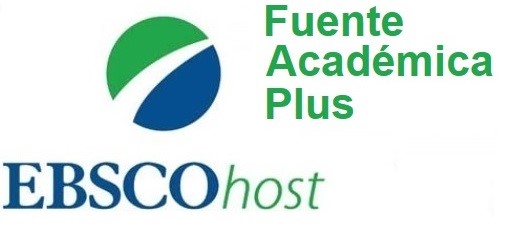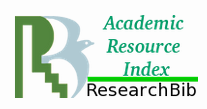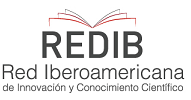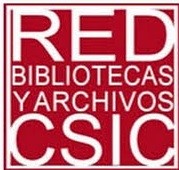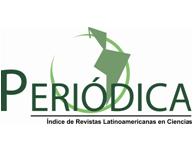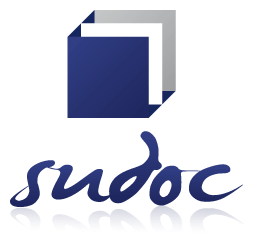About the Journal
About the Centro Azúcar Journal
Centro Azúcar is a journal of the Faculty of Chemistry and Pharmacy of the Universidad Central “Marta Abreu” de Las Villas. It was founded in 1973, each volume consisted of 4 issues, that is, quarterly (January-April-July-October). Its abbreviation is CAZ, which should be used in bibliographies, footnotes, references and bibliographic strips.
As of 2025, it adopts the modality of continuous publication with one volume per year, without issues, conducive to the immediacy in the editorial flow and dissemination of contents and its access address is: http://centroazucar.uclv.edu.cu/.
It was created to publish scientific papers on sugar production, but has expanded its profile to other topics related to the sugar cane industry and its derivatives, obtaining biofuels, technical, economic, environmental and social problems of its operation and development, chemical processes in general and derivatives, simulation and optimization of processes, environmental management, chemical engineering in general, and has a miscellaneous section.
Centro Azúcar is in favor of Open Science (CC BY-NC), and therefore receives manuscripts from preprint repositories, and promotes the placement of research data in dataservers among other manifestations. It is an open access journal whose Mission and Goals are to publish free of charge original scientific articles, reviews and short communications, in Spanish and English, that are unpublished, related to the topics described above.
This journal applies open peer review as a mechanism to favor transparency in the editorial and scientific communication process.

e-ISSN: 2223-4861 │ p-ISSN: 0253-5777 │ RNPS:0179 │ RNSP:2152
Conditions for the acceptance of works
Original articles: they must be finished works with special importance and must be presented in a clear and concise form.
Reviews articles: The authors of articles to be reviewed must consult previously the publishers to know the possible acceptance of the topic in question.
Brief communications: Short communications of investigations will be accepted in the incipient condition and with potential for their diffusion across the journal.
Form and preparation of manuscripts
Content
The Publishing Committee to consider any paper for it further publication in Centro Azúcar Journal, it must follow certain regulations: Papers must be written in Microsoft Word for Windows, normal 12 font size in Times New Roman, and one and a half line spacing. It must consist of the following parts: Title, Authors with their ORCID iD, Structured Abstract, Keywords, these last four also in Spanish, and Introduction, Materials and Methods, Results and Discussion, Conclusions, Acknowledgements (if applicable), Bibliographic References, Conflict of Interest and Authors' Contributions.
The paper should be divided into numbered sections clearly defined, from the Introduction to the Conclusions. The sub-sections should be numbered 1.1 (then 1.1.1, 1.1.2,...), etc. The, abstract, acknowledgments and references are not included in section numbering.
- Title, abstract and keywords must be written in English and Spanish. The title should be explanatory and preferably short (no more than 18 words). The abstract, of approximately 250 words, should be the synthesis of the manuscript. Acronyms, abbreviations should not be used and the language must be technical and precise, including the methodology, results and conclusions. Both should be written in third person. Keywords: keywords should be separated by semicolon (;) and not exceed 6; reflect all the work, allowing its classification and set out in alphabetical order.
- Authors should appear below the title, one below the other with their ORCID iD. If authors are from several institutions after each name a number will appear in superscript with the indicator of the institution to which it belongs and the country. An asterisk will expose the author to whom the correspondence should be addressed; his electronic address must appear in first page footer as it found on paper template. Following and below the list of authors will appear the number followed by the referred author's institution, postal address.
- Introduction, brief, with the exposed problems and at the end the objective of the article. It should not contain tables or figures.
- Materials and Methods must be written in third person; it must appear followed methodologies and the main aspects of the investigation. In field experiments, the experimental design and the soil and climatic characteristics of the site should appear. The statistical package used and evaluated components should appear. The international system of units of measurement and chemical nomenclature is used. Equations should be "all" written with the equations editor of Word, in the appropriate place in the text, centered and numbered consecutively with Arabic numerals in parentheses.
- Results and Discussion The research results must be specific and supported by tables and figures. Discussion of the results in comparison with those presented by other authors may appear. There must be differences between treatments and the corresponding statistics should appear. Tables will appear above named with consecutive Arabic numerals; the title will be in normal 11 font size in Times New Roman. They must be in the text where appropriate, after the reference. If there are any abbreviations, they should be referred under the table in a legend in 10 font size. b. Figures should be made in Word or Excel for Windows, (originals), it can be in color. The title of the figure should appear below it, with the same writing regulation of the tables’ title. c. Photos if required, these must be of excellent quality in color or black and white and with good contrast between them and the author of this picture. Decimal numbers should be separated by periods and only are accepted separated by commas if the paper is in Spanish.
- Conclusions should express concretely and synthesized the results.
- References (see regulations below).
- Conflict of Interest should appear very clear if there is any kind of conflict of interest or not.
- Authors' Contributions all authors must appear stating very briefly what they specifically contributed to the article according to the CRediT (Contributor Roles Taxonomy) specification system. CRediT considers 14 different roles of authorship or contribution: project management, formal analysis, conceptualization, data curation, writing - first draft, writing - revision and editing, research, methodology, obtaining funding, resources, software, supervision, validation, visualization.
- Acknowledgements: if any, they should preferably be brief and include the essential inputs for the development work.
- Brief Communications will have the same requirements as those for the title, bibliographic regulations and conclusions. They will not have specific part at all. Propose up to three key words of the same.
Bibliographic references:
In all papers, bibliographic references should be included at the end of the paper and pointing them in alphabetical order within the document like this: for example, Morrell (1984), when it is a single author; (Lozano and Ramirez, 2012), when they are two authors, when more than two and (Sabadi et al., 2013) if it is in English and (Sabadi and col., 2013) if it's in Spanish. The bibliographic references used in each of the scientific communications, and which have a source (scientific journals, websites, other resources, including most books) from 2015 onwards must be accompanied by their electronic location (URL or DOI). The basic standards required for the structure of this bibliography can be interpreted in the following examples; you should only refer to the cited bibliography within the paper:
- Journal papers:
Salvador, C.A., Albernas, Y., Mesa, L., García, A., Villamarín, E., Pibaque, R.J., & González, E., Obtaining the kinetic parameters of the enzymatic hydrolysis of sugarcane bagasse using a new enzyme mixture from commercial Aspergillus niger and a local strain of Bacillus subtilis (Bal3). Afinidad, Vol. 78, No. 592, 2021, pp. 54-61. https://raco.cat/index.php/afinidad/article/view/385612
Ferreira, R.G., Azzoni, A.R., & Freitas, S., On the production cost of lignocellulose-degrading enzymes., Biofuels, Bioproducts and Biorefining, Vol. 15, No. 1, 2020, pp. 85–99. https://doi.org/10.1002/bbb.2142
- Books:
Morrell, I., Tecnología Azucarera., Vol. 1, Editorial Feijóo, Universidad Central Marta Abreu de Las Villas, 1984, pp. 208-215.
Tyagi, S., Lee, K.J., Mulla, S.I., Garg, N., & Chae, J.C., Production of Bioethanol from Sugarcane Bagasse: Current Approaches and Perspectives., Applied Microbiology and Bioengineering, Elsevier: Academic Press, 2019, pp. 21-42. https://doi.org/10.1016/b978-0-12-815407-6.00002-2
- Patents:
Zudkevitch, H., Extraction and/or extractive distillation of low molecular weight alcohols from aqueous solutions., United States Patent, 4,428,798., January 1984.
- Reports:
Book, E., Bratman, H., Using compilers to build compilers., Special Publications 176, Santa Mónica, Calif., Systems Development Corp., Ag., 1960, pp. 1-3.
- Memoirs:
Sabadí, R., Garrido, N., Pello, D., Bagasse and trash based cogeneration in a new industrial complex., Memoirs of XII International Congress on Sugar and Sugarcane Derivatives, DIVERSIFICATION 2013, Hotel Nacional, La Habana, October 2013, pp. 455-464
- Degree thesis or project:
Albernas, Y., Procedimiento para la síntesis y el diseño óptimo de plantas discontinuas de obtención de bioetanol empleando bagazo de caña de azúcar., Thesis presented in option Scientific Degree of Ph.D. in Technical Sciences, Chemical Engineering Specialty in Central University “Marta Abreu” of Las Villas, Cuba, 2014. https://dspace.uclv.edu.cu/handle/123456789/6612
Sending of manuscripts
Manuscripts should be sent to the Journal's e-mail address centroazucar@uclv.cu, using the Journal's template (maximum 12-14 pages).
